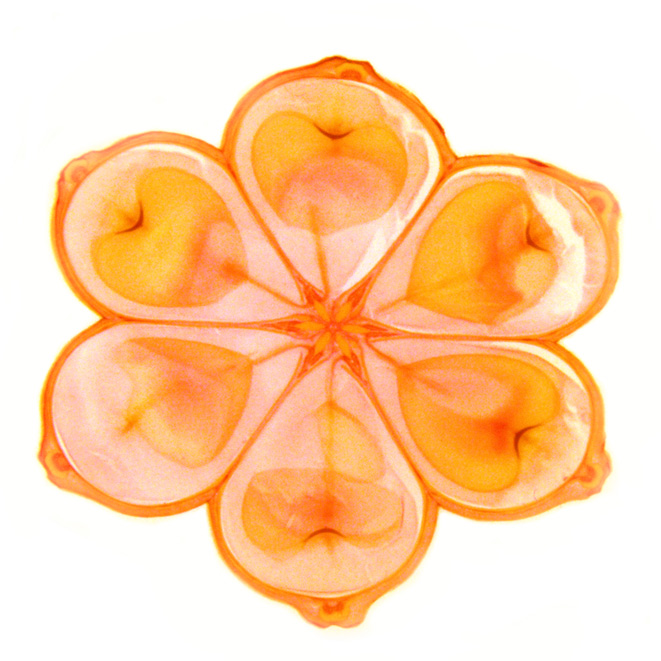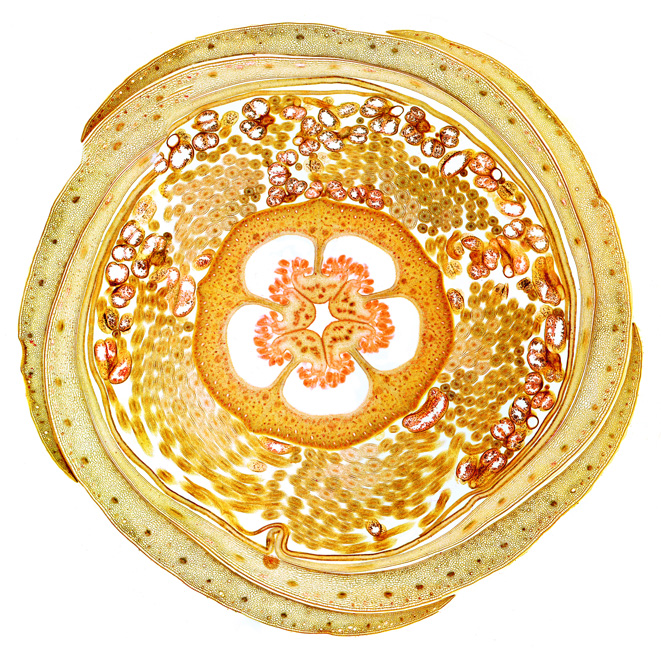Victorian Plant Specimens Rescued and Revived in Inspiring New Exhibition
150-year-old plant specimens rescued from a skip and microscope slides found in forgotten cupboards are taking centre stage at a new exhibition organised by a third year University of Nottingham student.
Plant sciences student, Eleanor Kilpatrick was inspired by the ancient microscope slides and rescued Victorian plant specimens discovered in the Life Sciences building and has organised this exhibition to display the beauty of the plants and open people’s eyes to nature. It is taking place at Lakeside Arts in the Angear Visitor Centre until 5November and is free to visit.

The ‘Green Unseen’ exhibition features 10 photograph prints of the specimens under the microscope that were chosen by Eleanor and photographed by Dr Tom Hartman who teaches MSc in Biological Photography and Imaging at the University of Nottingham. The images reveal the beautiful geometry and symmetry of plant cell structures. They are accompanied by watercolour paintings by fellow student Conor Hayes-Mannering that illustrate the plant morphology of the specimen collections.

The exhibition also includes painted recreations of pelaeo landscapes from different prehistoric eras by retired University of Nottingham plant scientist Graham Seymour. These show giant ferns alongside flowering plants that share similarities with species found today. His oil paintings are accompanied by a display of plant fossils.
Eleanor has spent the past year organising the exhibition alongside her studies, supported by Dr Tom Hartman from Life Sciences after they were awarded a Cascade grant from the University to support the project.
As a plant scientist I was really excited to see these antique specimens and wanted to make sure they weren’t lost so initially we started going into the labs to look through them, clean them and make sure they weren’t damaged, then add them to a database so that other people could access them. This then led to the idea of showing the specimens more widely.
Dr Tom Hartman from the School of Life Sciences at the University of Nottingham has been using the slides for teaching and has been involved in a number of initiatives with Lakeside Arts. He has uncovered many specimens over the years.
Preserving natural history collections is really important, so I had no hesitation in rescuing these specimens from the skip. When I showed them to Eleanor she was really keen to do something with them and we are delighted they are now at the heart of this exhibition. From the way the specimens have been prepared I am pretty sure that some of them are at least 150 years old, from a time when microscopy and plant collecting experienced a boom in popularity. These dried plant specimens have been vital for research into how plants distributions are changing in response to climate change.
Eleanor continues: “I have always been passionate about plants and nature but know that as a scientist I am in a privileged position and not everyone is aware of the beauty and importance of them. Through this exhibition I want to address this ‘plant blindness’ and open people’s eyes to nature and celebrate it. The specimens that were saved really inspired me to bring what is only usually seen by scientists under the microscope to the public.”
As well as the exhibition there is also a public lecture in Wednesday 18th October with talks from academics about plants and the natural world, this is open to everyone and free to attend. Visitors to this will also have the opportunity to visit the exhibition afterwards and talk to the speakers and find out more about the displays.

